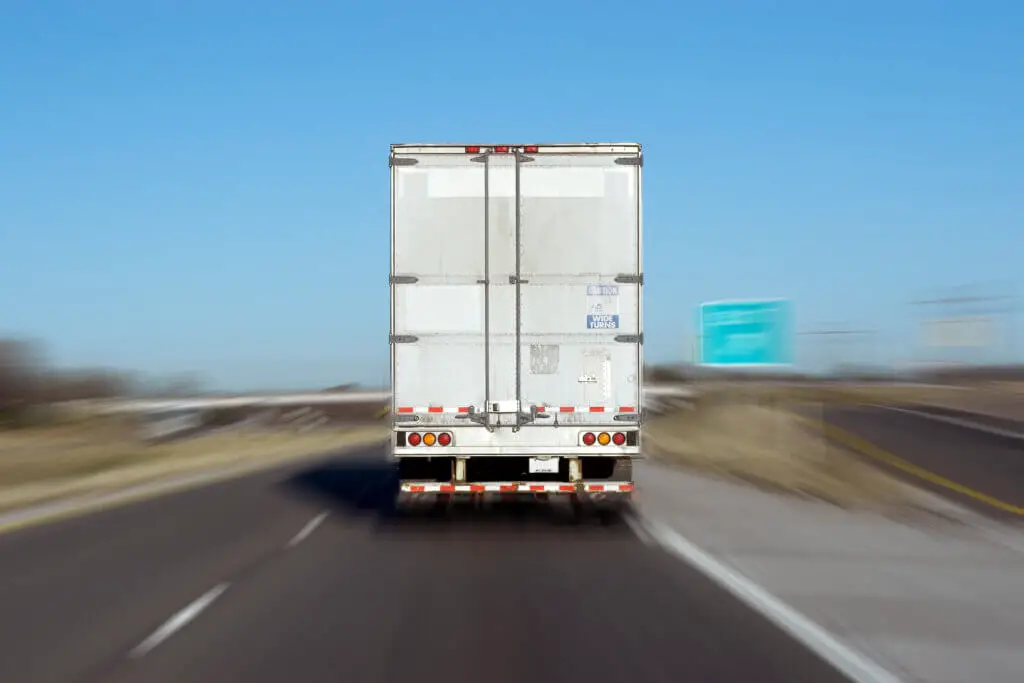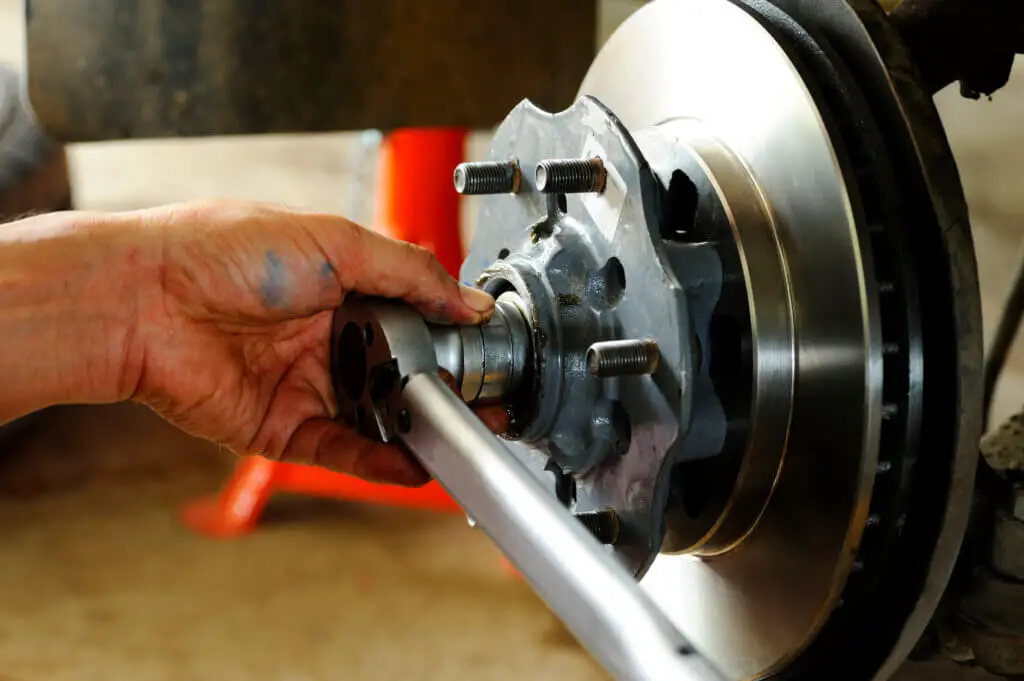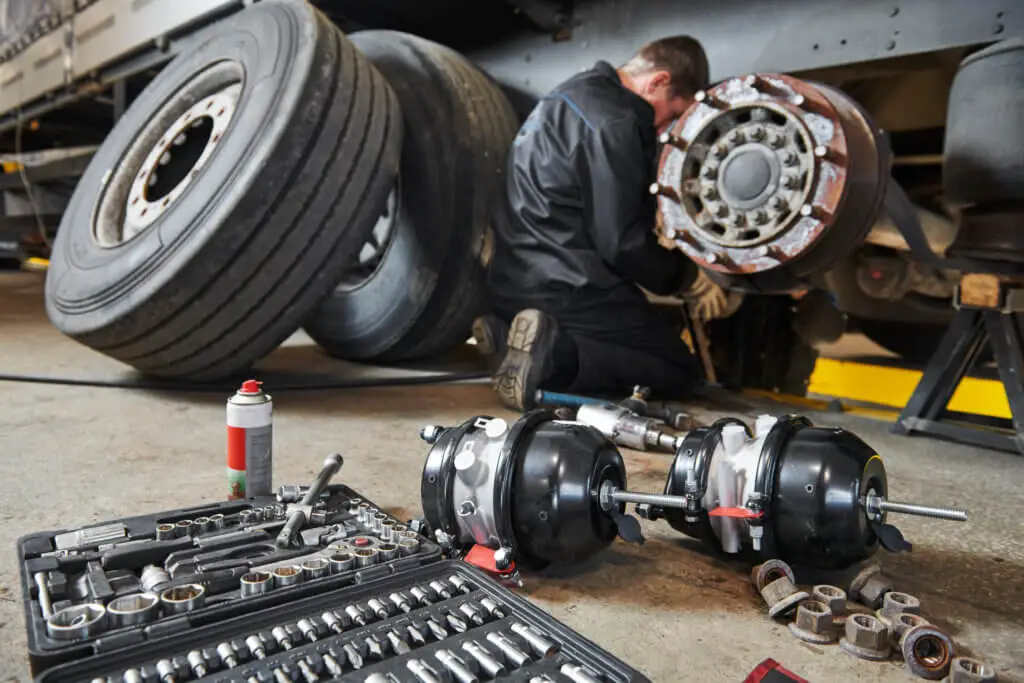The brake is one of a truck’s key components, and it has several ways of notifying a trucker when something is not quite right. These symptoms are usually accompanied by disturbing sounds, an unusual feel at the brake pedals, and sometimes very noticeable changes in driving patterns.
These changes could cause a truck to pull to the right when the brakes are applied. This article identifies the possible causes of a truck pulling to one side and how to diagnose and identify specific faults correctly.

Why Does Your Truck Pull To One Side When Applying The Brakes?
A semi-truck would pull noticeably to the right side when there is a fault with either the braking system or the truck’s suspension affecting just one side of the truck. Of those two, the baking system is often the most common culprit.
Other issues, like low tire inflation and poor right wheel alignment, could cause a truck to pull to one side when the brake is applied.
1. Issues With The Braking System Issues
Common braking system issues in semi-trucks that could lead to the vehicle pulling to one side include:
● Stuck Brake Caliper
More often than not, a truck pulls to the right while braking because of a faulty caliper in the braking system. The most typical problem in this instance is a jammed caliper, which you must replace quickly to get the brakes operating properly.
● Worn out or Mismatched Brake Pads
A truck’s brake pads are positioned on the axle and generally wear out simultaneously. However, there are also instances where brake pads wear down at an uneven pace, making some brakes less effective than others. The result is a truck pulling to one side when the brakes are used.
A mismatch in brake pads might also be an issue. Brake pads are manufactured with variable coefficients of friction. Changing a brake pad with a higher or lower frictional coefficient than other brake pads might result in a mismatch. When the brakes are engaged, the vehicle veers to the right because certain wheels have greater braking force than others.

● Collapsed Brake Hose
A ruptured brake line is another item to consider. A brake hose is in charge of transporting braking fluid to the brake caliper, and any internal limitation might cause a vehicle to swerve to one side for a brief period.
In the event of a collapsed hose, the truck will typically only pull for a few seconds before returning to regular operation. A more significant problem arises when brake fluid does not return to the master cylinder, causing the caliper to not fully release. This results in a longer pull when the brakes are engaged.
2. Issues With Suspension
When a truck slows or stops, its weight changes across the wheels, making the suspension a vital component in braking. Because of the role the suspension plays in the balance of your truck, problems affecting it may also cause your semi to pull to the right when braking.
3. Tire Issues
A truck tugging to one side might also be caused by unequal tire pressure or a damaged wheel bearing. The air pressure of a tire affects its diameter and speed; hence, a tire with much lower air pressure than the opposite tire would cause alignment concerns and cause the truck to pull to that side.
Furthermore, damaged wheel bearings may result in a misalignment of the braking rotors and caliper. This implies that the brake pads may not come into touch with the rotor as they should.
How To Perform Semi Truck Diagnosis Yourself
Performing a self-diagnosis of your truck is essential in identifying the exact fault. Typically, the braking system is the leading cause of these pulling problems. Hence, carry out these steps to fix brake issues:
1. Check Caliper Slides, Brake Pads and Rotors
Check to see whether the caliper slides are jammed, which causes the caliper to partly engage, resulting in a brake pull. Taking the truck for a test drive and applying the brakes forcefully is a straightforward technique to uncover this problem.
Using an infrared laser temperature reader to verify the temperature of each rotor is required for a more technical diagnosis of this condition. A high-temperature difference between opposing rotors indicates a caliper issue.
Aside from a stuck caliper, it is also possible one of the calipers is not actuating owing to faulty slides or insufficient brake fluid getting in and out of the caliper because of a faulty brake line. In this case, replace the brake hose.
Additionally, if this pulling problem is accompanied by squeaking and grinding sounds and vibrations, then the brake pad might be worn out. To avoid mismatched brake pads in the truck, replace the worn-out brake pad with a similar one.
Performing a diagnosis on the braking system might be quite overwhelming. Hence, engaging a specialist could be a preferable option.
2. Inspect Your Suspensions
After ruling out brake difficulties as a probable cause, inspect the tires and suspension for flaws.
In the case of suspensions, identify loose or worn suspension parts, such as damaged brushings or damage to the lower control arm, ball joint, torsion bar, and tie rod. These conditions may also cause a truck to pull to the right.
3. Fix Your Tires
Faulty tires may have problems with the belts and plies that make up the tire. If a tire is internally damaged, it is advisable to replace it. You may also check tire pressure and make sure that each tire has the recommended amount of air.

Conclusion
Brakes are very critical to the safe operation of your truck. Therefore, all issues should be recognized and rectified as soon as possible. A semi pulling to one side frequently indicates a braking problem, and while some of them may be small, they have the potential to grow into more catastrophic issues.
Following those guidelines will allow you to perform basic self-diagnosis on your truck before replacing any broken components. And if you’re not the handy type, please invite a specialist to help out.
